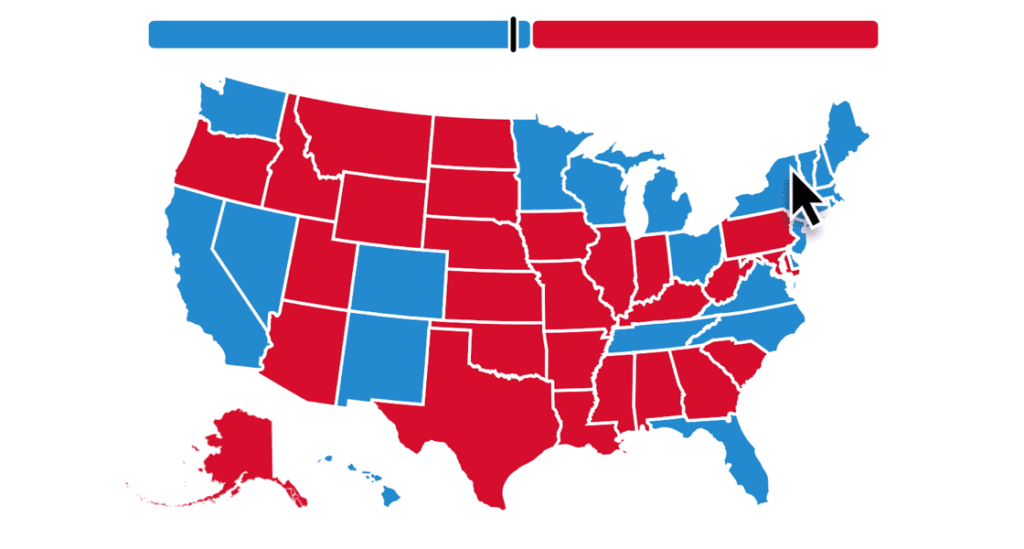
Source: NBC
Swing states in the US often make or break an election.
Do you ever wonder why United States’ Presidential elections often draw frenzied, global attention? Aside from the fact that its the leader of the free world, and an American President has global consequences-the very nature of its political system and infrastructure is actually complex and fascinating.
So let’s get back into it. A swing state in the United States refers to states that are simply too close to call, or can swing either red or blue.
So, its understood that California is and pretty much always will be a Democrat state (Blue). Alabama is a Republican state (Red).
But what about the others? Swing states have swung back and forth between Democratic and Republican candidates in recent years. This is why these states become the focal point of every election, and why Presidential candidates spend time, money and focus on the battleground states.
Swing states includes Arizona, Colorado, Florida, Georgia, Iowa, Maine, Michigan, North Carolina, Ohio, Pennsylvania, Texas, and Wisconsin.
Although, some political science experts often disagree on what the true swing states are, the list above is pretty much the textbook list.
“Swing states are the most critical states in the upcoming election. They’re essentially the tipping point of who’s going to win the electoral college, then win the presidency,” explains Swing Left National Field Director Marisa Kanof to Marie Claire.
Florida is a special state
Here’s where it gets a bit tricky. The presidential candidate who wins a swing state like Florida has a better chance of winning the election. This is because of the United States’ electoral college set up.
The number of electors each state gets is based on population. For example, Florida, with its large population, will determine 29 electoral votes. (That ties with New York for the most after California and Texas.)
The candidate that receives 270 votes in the electoral college will win the Presidency. Therefore, a state with 29 votes definitely cannot be ignored.
Florida indeed swings from one party to the next.The state supported Democrat Barack Obama in 2008 and Republican George W. Bush in 2000.
Its diverse mix of heritage and gender also makes Florida a strategic state to pay attention to.
Women make up 58% of Florida’s registered Democrats, compared to men’s 39%. Florida is also home to Latinos, Republican-leaning Cuban-Americans and Democratic-leaning Puerto Ricans. It’s a whole mix in there, and arguably one of the best states to litmus-test your popularity.

As you can see, American politics gets pretty mathematical and complicated. For the full run-down and scenario play, we recommend you head over to Fivethirtyeight, a resource packed website that focuses on poll analysis in politics, sports and economics.
Why 2020 is a special year
We probably don’t need to tell you twice, but 2020 is shaping up to be a pretty special year for the election. Covid-19 might spring to mind. According to reports, Coronavirus cases are spiking in the most contested battlegrounds of the presidential election.
Covid-19 has emerged as a central issue in the campaign, and its logical to assume that if a swing state is badly hit by the pandemic, chances are they may just swing the opposite way at Trump’s expense. This also assumes that the voter views President Trump’s handling of the pandemic as poor.
The recent surge in cases might be enough to push some of those voters toward Biden, who has consistently received higher marks than Trump on the question of which candidate would better handle the pandemic, according to CNBC.
All in all, swing states are historically relevant, strategically important and a cause for analysis every four years during the campaign season.




